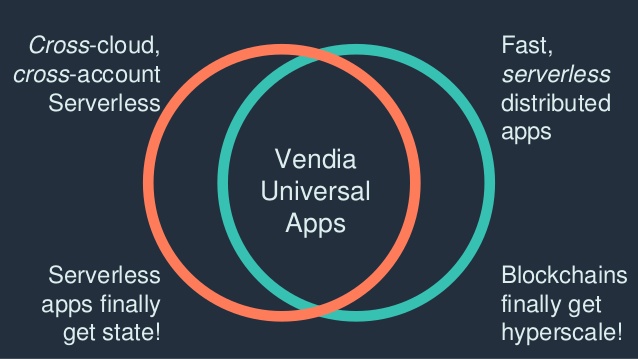13 business models to generate revenue
How businesses can generate revenue has changed a lot over the last decade. Choose the most appropriate business model for your company from these 13 business models updated for 2021.
1. Control and be rewarded from your own data business model
In exchange for convenience and a personalized experience, brands have been telling consumers to give away their personal data and relinquish any control over it.
We now know how brands used their consumers’ data and the damage they have caused.
Also, selling users’ personal data to third parties has been a huge source of revenue for these companies.
According to the latest PwC report, times are changing.
Consumers are demanding both a better, data-enabled experience and more flexibility and control over how their information is used.
In addition to this, consumers are starting to ask themselves: why should only companies profit from selling their data? They should take a piece of the pie as well.
Gener8 Ads is a web browser offering exactly that: it lets users control and earn from their data whilst browsing the web.
Gener8 Ads works with companies in the capacity of a media owner to do three things:
1. Provide premium media for them to reach a highly defined audience.
2. Use their proprietary first-party data to unveil actionable insights about their customers, eg. their purchase habits.
3. To promote their brands and drive action from their audience.
How does Gener8 Ads generate revenue?
Gener8 Ads gives 80% of the revenue back to the user and takes a 20% cut.
Users download the Gener8 Ads browser and choose to keep their data private or earn points any time their data is used. They can redeem these points for products, vouchers or donations to charity.
Watch Sam Jones, the company’s founder pitch Gener8 Ads on Dragon’s Den:
2. Empowering creators business model
What is the creator economy?
The creator economy has been growing exponentially in the past few years. It is estimated that more than 50 million people worldwide consider themselves to be creators.
Mighty Networks defines the creator economy as an economy built around highly motivated, creative, and skilled individuals that have started their own brand, business, or community utilizing a digital platform to share their work.
Not coincidentally, Mighty Networks is one of the platforms contributing to the creator economy. It is a community-focused platform that helps users build their businesses.
Mighty Networks offers users three plans they can choose from: the free plan, the business plan ($81/month) and the community plan ($23/month).
This is how users can drive business revenue depending on their chosen pricing plan:
- Charge for access to their membership site or group
- Charge for access to their online courses
- Becoming a Mighty Affiliate
3. Shopstreaming business model
Shopstreaming is the combination of live streaming, entertainment and shopping.
China is leading the shopstreaming market with 67 billion dollars in global sales for 2019 and an estimated 149 billion dollars for 2020.
If these stats show anything is that consumers want to buy from influencers during shopstreaming sessions.
It’s a business opportunity that saw various developers create digital platforms intended to transform the way to stream live events.
Livescale is one such developer. The company’s shopstreaming platform, LivescaleTV enables businesses to reach, engage, and monetize their audience, as well as understand the behaviours and interactions of their users.
L’Oréal Canada was the latest brand to use Livescale TV when they hosted a three-day shopping streaming festival.
Results:
- over 50% of product purchases from new customers,
- 300% higher conversion rate than the company’s website,
- 40% audience engagement.
4. Blockchain-as-a-service business model
According to recent reports, the global blockchain-as-a-service market size is expected to grow at an impressive compound annual growth rate of 62.73% to $52.5 billion by 2026.
Blockchain as a Service (BaaS) is a type of blockchain service offering that allows business customers to use cloud-based solutions to develop, host and adopt their own blockchain applications, smart contracts and other relevant functions on the blockchain.
The main drivers of the global Blockchain-as-a-Service market are:
- increasing awareness of the benefits provided by blockchain technology;
- need for security in transactions.
The top leaders operating in the Blockchain-as-a-Service (BaaS) market: Oracle, Microsoft, Accenture, Alibaba, IBM and Huawei.
5. Subscription business model
The subscription business model is a business model in which customers pay a recurring price at regular intervals for access to a product or a service.
The first companies to adopt the subscription business model were the news publishers whose readers paid a monthly fee to have newspapers and other magazines delivered to their door.
In more recent times, companies providing digital tools and platforms like Canva, Monday or Grammarly generate recurring revenue based on the subscription business model.
Other companies didn’t start as subscription-based businesses but recognized an unmet need for their products to be delivered on a monthly basis.
Customers opt for products to be delivered on a monthly basis because it’s convenient and saves them precious time.
Here are some examples of products delivered in subscription boxes; some also provide customization:
- Dog food subscription boxes (PetPlate, Jinx, Crafted Kibble)
- Beauty care and makeup subscription boxes (GlossyBox, BoxyCharm, Birchbox)
- Meal subscription boxes (Pasta Evangelists, Raw Generation, Hello Fresh)
6. Freemium business model
Freemium is a business model in which a company offers basic features to users at no cost and charges a premium for supplemental or advanced features.
It’s an appealing strategy for both companies and customers. Free is a powerful word in marketing because of its ability to instantly grab a customer’s attention. If basic free features are valuable to them, customers are more likely to pay for advanced or additional features.
When used correctly, the freemium business model can drive massive user adoption.
Dropbox, Zoom and Spotify are great examples of the freemium business model.
Dropbox has an annual revenue of $1.91 billion, Zoom – $2.6 billion and Spotify, $9.34 billion.
7. Dropshipping business model
The dropshipping business model is used in retail where the seller purchases the product from a third party (manufacturer or wholesaler) and has it shipped directly to the customer. The seller doesn’t hold the products in stock.
The main benefits of the dropshipping business model:
- Low investment
- Easy to start
- Perfect for beginner entrepreneurs
- Flexibility
- Remote work
- Easy to scale
- Wide selection of products
Among the top eCommerce platforms for dropshipping businesses are Amazon, Shopify, WooCommerce and Magento.
8. Drop-servicing business model
Drop servicing is a business model where your company sells other people’s services online.
Your company doesn’t perform the service, a third-party company performs the service.
9. Commission-based business model
The commission-based business model is a revenue model where a user is charged a fee for each transaction. The platform may charge either the seller or the buyer.
Examples of commission-based businesses: PayPal, Uber, Airbnb, Etsy, eBay.
10. Hidden revenue business model
If the service is free, you are the product, goes a very famous saying.
What it means is the service is not actually free. As the user, you pay for it, not with money, but with your personal data.
It’s the business model of digital giants like Google, Facebook, Instagram, Pinterest etc which collect users’ data and sell it to businesses for advertising purposes.
In 2020, Google generated almost $147 billion in revenue from the company’s ads business. Facebook generated close to $84.2 billion in ad revenues.
11. Razor and blade business model
The razor and blades business model is a business model in which one item is sold at a low price in order to increase sales of a complementary good, such as consumable supplies.
The best examples of companies generating revenues with this type of business model are suppliers of razors and blades (Gillette), printers and ink cartridges (Xerox), coffee makers and coffee pods/capsules (Nespresso), 3D printers and printing materials, game consoles and games.
12. Reverse razor and blade business model
The reverse razor and blade business model is a type of business model where the main product is sold at a premium price and the consumable, at a lower price.
Apple is the standard example of the reverse razor and blade business model. The main product, the iPhone, is sold at a premium price. Once the customer owns an iPhone, they have access to low-priced features like music on iTunes, movies or Mac OS and iWork free of charge.
13. Affiliate marketing business model
The affiliate marketing business model is a revenue model in which a company compensates third-party publishers to generate traffic or leads to the company’s products and services.
The publishers are paid in commission for every sale they make.
How does it work?
The affiliate shows a link for the product they are selling on their website or social media, customers click on the link which sends them to the store. If they purchase the product, the affiliate is paid a commission.
Two of the top-earning affiliate marketing platforms are Amazon Associates and Shopify Affiliate Program.
Join the Conversation
We’d love to hear what you have to say.
Get in touch with us on our LinkedIn Page, Facebook Page, Twitter or TikTok.
Blockchain Business News 22-28 March
This is the weekly wrap of Blockchain Business News for 22-28 March. Subscribe to get the blockchain news you need for your business!
Germany creates bridge between blockchain and euro
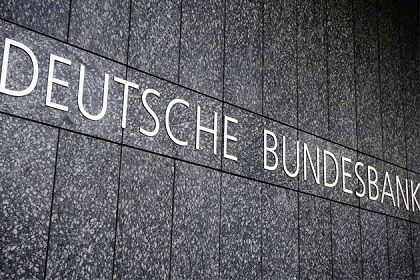
German authorities have developed technology allowing investors to buy and sell securities on the blockchain in return for central bank money, bridging a gap between two worlds that once seemed irreconcilable.
The Bundesbank, which partnered with Deutsche Börse and the German government’s debt agency for this project, said on Wednesday its solution was the first allowing those who sell securities on the blockchain to receive their proceeds on their account at the central bank.
The technology could be scaled up to the entire euro zone shortly and well before the European Central Bank’s digital euro is launched, it said.
“The participants have demonstrated that it is possible to establish a technological bridge between blockchain technology and conventional payment systems to settle securities in central bank money with no need to create central bank digital currency,” the Bundesbank said.
Israeli Blockchain Startup StarkWare Raises $75 Million Series B
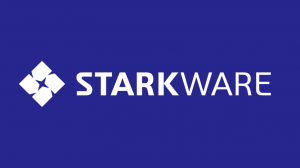
StarkWare creates scaling solutions for blockchains. The company’s core technology is called STARK.
Through its technology, StarkWare aims to solve the inherent problems of permission less blockchain, namely scalability and privacy.
Last week, the Israeli startup announced that it has raised a $75 million Series B round.
“Our technology can multiply blockchain scalability by 1,000 times. Thanks to our technology, we are becoming the engine behind many of the transactions taking place on blockchains and the main engine behind NFTs,” explained co-founder and CEO Uri Kolodny.
StarkWare recently announced the launch of StarkEx 2.0, the first system in production to be programmed in Cairo, the company’s new Turing-complete, programming language for generating STARK proofs.
If you’re looking to invest, Israeli-based tech startups such as StarkWare should be among your top choices. In a previous article on the top tech hubs of the world, Israel was in top 5 with the technology sector growing faster than any other industry in the country.
Microsoft breakthrough: the launch of ION, its decentralized identity protocol for managing web account access

ION is the end result of four years worth of work that Microsoft has put in to develop and advance decentralized identity.
Decentralized identity is an emerging form of identity technology that empowers individuals and creates new business capabilities.
“Our goal is to put individuals, organizations, and other entities at the center of the apps, services, and digital exchanges that increasingly play a pivotal role in our lives”, said Daniel Buchner, Decentralized Identity, Microsoft in the company’s announcement blog.
In order to deliver decentralized identity, the most important are Decentralized Identifiers (DIDs).
What are DIDs?
DIDs are identifiers that can be used to secure access to resources, sign and verify credentials, and facilitate application data exchange.
Unlike traditional usernames and email addresses, DIDs are owned and controlled by the entity itself (be it a person, device, or company), and exist independently of any external organization or trusted intermediary.
What is ION?
ION stands for Identity Overlay Network and is a set of open standards which runs atop the Bitcoin blockchain.
ION is a public, permission-less, open network anyone can use to create DIDs and manage their Public Key Infrastructure (PKI) state.
Blockchain.com valuation jumped from $3 billion to $5.2 billion in just 30 days
Blockchain.com, one of the world’s largest cryptocurrency wallet providers, has recently announced that it’s raised $300 million in a mega fundraising round that values the company at $5.2 billion.
Blockchain.com now has over 31 million verified clients in over 200 countries, tripling its user base in the past 12 months.
The company will spend the fresh cash on expanding its products, ramping up hiring globally and pursuing mergers and acquisitions.

Blockchain.com CEO & co-founder Peter Smith
“With one of the most significant balance sheets in the industry, we plan to aggressively expand the products we offer our customers, grow our global team, and pursue M&A opportunities to bring exciting new products and ideas into the company”, said Blockchain.com CEO Peter Smith.
Join the Conversation
We’d love to hear what you have to say.
Get in touch with us on our LinkedIn Page, Facebook Page, Twitter or TikTok.
Blockchain Business News 15-21 March
This is the weekly wrap of Blockchain Business News for 15-21 March. Subscribe to get the blockchain news you need for your business!
Bitcoin holds around $60K; will it get to $100K?
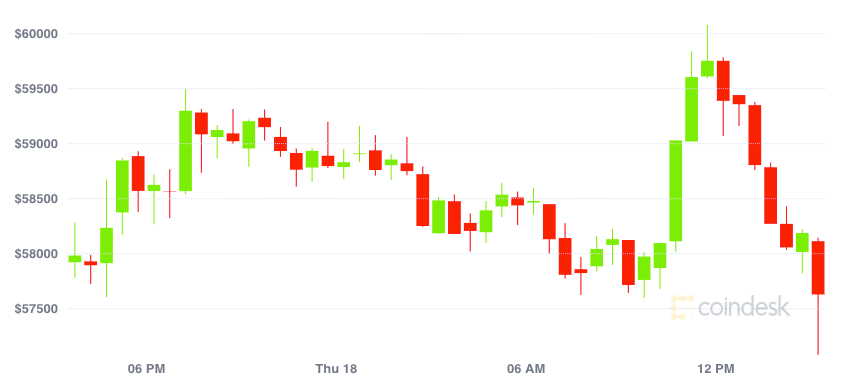
Over the past three months, the main cryptocurrency gained 3x in price.
Bitcoin began to actively grow in price after it had broken the $20K mark in December last year. On the night of March 18, 2021, Bitcoin price again approached the $60K mark.
Will it get to $100K this year? Experts say it’s highly likely because the conditions under which Bitcoin would grow twice more this year are already present.
One of the main reasons is the high demand for the first cryptocurrency from institutional players.
The second reason is the policy of the US Federal Reserve and the economic instability.
If the Stock-to-Flow scenario would continue to be realized, then the price of $100K per BTC is projected in late summer — early autumn 2021.
Crypto companies are booming
It’s been a good week for crypto companies.
BlockFi, a financial services startup for crypto, raised $350 million at a $3 billion valuation. Today, the startup has 265k+ retail and 200+ institutional clients, while monthly revenue has hit $50 million (vs. $1.5 million a year ago).
BlockFi also offers interest on crypto savings (6%+) and lends money against crypto holdings so people looking for liquidity don’t have to sell their assets (it has lent $10 billion + so far). The company also provides trade execution services to help organizations secure large blocks of crypto.
FalconX, another crypto trading platform that aims at institutions, raised $50 million. As Bitcoin surged over the past year, the platform saw its revenue increase 46x.
Cryptocurrency exchange Coinbase has reached an implied $68 billion valuation ahead of its highly anticipated direct listing on the Nasdaq. Coinbase’s first filing in February showed the company reported a profit of $322 million last year on net revenue that more than doubled to $1.1 billion (source).
India still undecided whether or not to ban cryptocurrency

Earlier this year, The Reserve Bank of India (RBI), the central bank of India whose primary function is to manage and govern the financial system of the country, had instructed banks to stop providing services to crypto trading platforms.
This move has led to uncertainty about the status of virtual currencies in India. Add to this the fact that existing laws are inadequate to deal with the subject and many rushed to the conclusion that India will ban crypto transactions.
Last week, finance minister Nirmala Sitharaman has made it clear that there will not be a complete ban on cryptocurrencies or at least the technology part of it. As per statement, the Indian government will soon take a decision on cryptocurrencies.
RubiX Blockchain Green Initiative to solve Bitcoin’s carbon emission problem
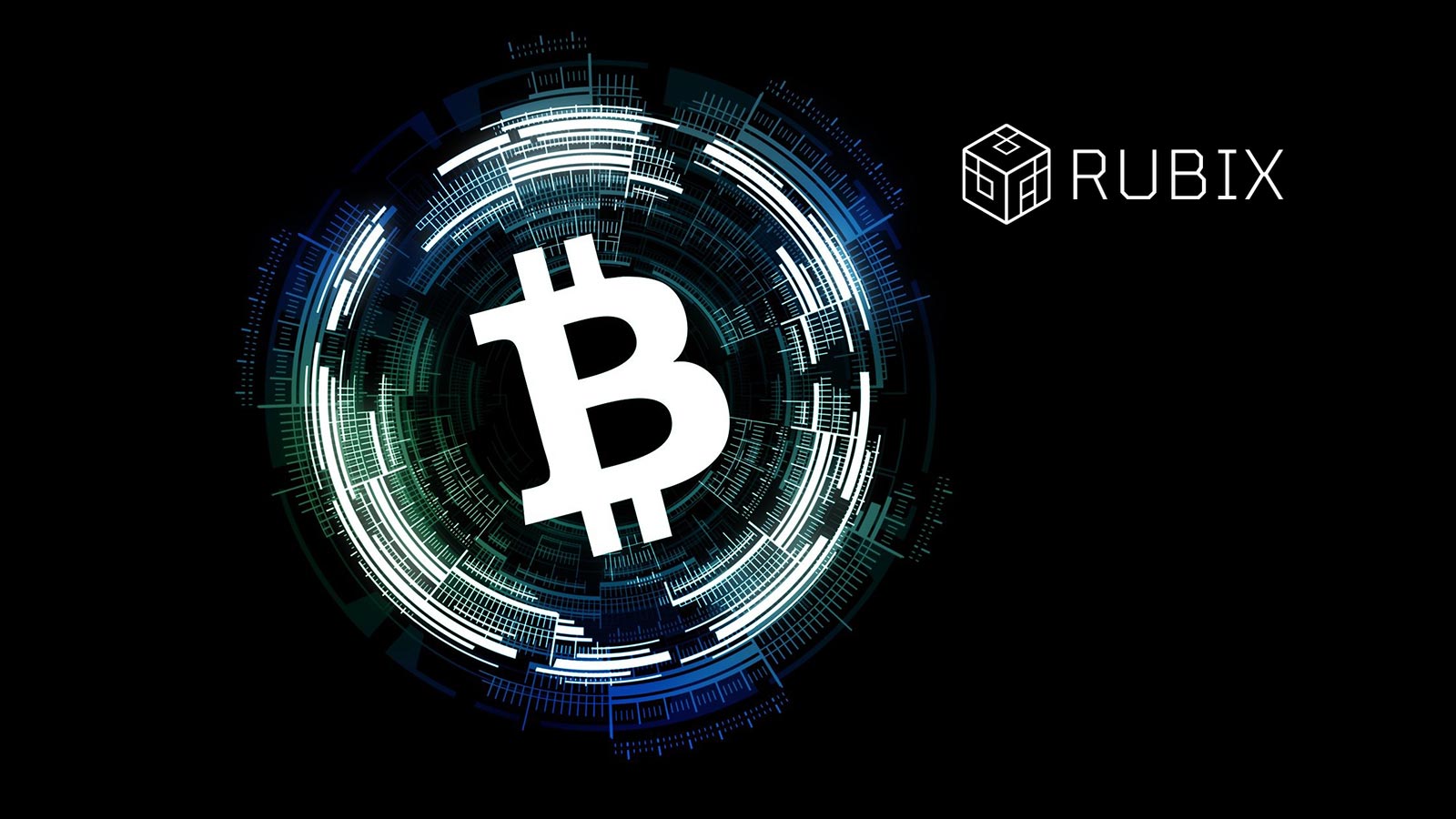
Bitcoin’s price has skyrocketed in the last year and so have its carbon emissions.
According to experts, Bitcoin has a carbon footprint comparable to that of New Zealand, producing 36.95 megatons of CO2 annually. And it consumes as much power as Chile. It’s a problem Bitcoin needs to address as soon as possible.
RubiX, a full-scale Blockchain-as-a-Service (BaaS) and security solutions company, announced last week that it is now providing a solution.
RubiX’s Blockchain Green Initiative provides an enterprise level Zero Carbon Footprint blockchain alternative.
This alternative is cryptographically 1,000,000 times more secure than the encryption used by Bitcoin or Ethereum.
“Our goal was to cut down the Carbon Emissions caused by Bitcoin and other Proof of work (PoW) based blockchain mining activities, using a secure proof-of-harvest alternative that’s cryptographically superior to the current blockchain platforms,” says Chakradhar Kommera, Chief Technology Officer at RubiX.
Does your brand cater to the needs of GenZ? Reach out to them through Yeay!
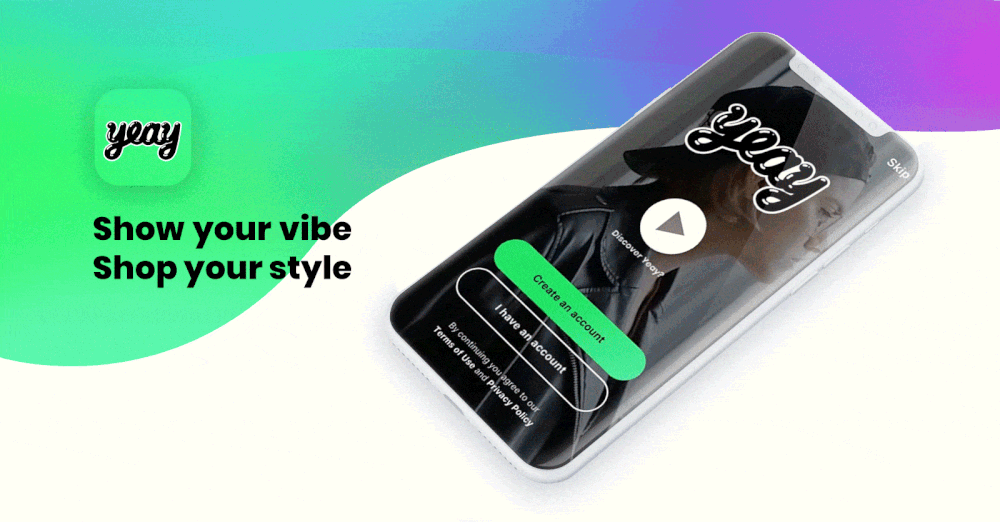
Yeay is a video platform providing teens with a space to share and shop styles.
The platform also provides brands with a marketplace to reach 13-18 year old.
Yeay launched in 2016 and a year later raised $4.9 million.
In 2018, the platform partnered with WOM Protocol to monetize peer-to-peer recommendations. WOM is a blockchain-powered advertising system that leverages the most effective form of marketing: honest word-of-mouth recommendations.
Yeay users get rewarded with WOM tokens for authentic and honest recommendations that are valuable to the community. They can use WOM Tokens to get cool stuff or turn them into cash.
Last week, the platform launched the YEAY House to give lifestyle influencers and their GenZ audiences a new way to monetize content while driving consumer blockchain adoption.
For the next month, a collective of lifestyle and crypto influencers with a combined reach of more than 40 million followers will be living, working and creating content together in the latest Los Angeles collaboration house. The influencers will be sharing their lifestyle by recommending the brands and products they love on the app and monetizing their content based on engagement after it has passed authentication.
Jack Ma’s Ant Group leads the way in blockchain patents
Ant Group, founded by Jack Ma in 2014 is an affiliate company of the Chinese Alibaba Group. The group owns Alipay, China’s largest digital payment platform which serves over one billion users and 80 million merchants.
AntChain is Ant Group’s self-developed financial-grade consortium blockchain platform.
The platform provides users with a high level of performance, reliability, and security. Specifically, it boasts 1 billion transactions for up to 1 billion accounts per day. The platform ranks first in the world by the numbers of patent applications and licenses. IBM, the only non-Chinese company in the top 10, ranked at #4.
Join the Conversation
We’d love to hear what you have to say.
Get in touch with us on our LinkedIn Page, Facebook Page, Twitter or TikTok.
Blockchain Business News 8-14 March
This is the weekly wrap of blockchain business news for 8-14 March. Subscribe to get the blockchain news you need for your business!
An NFT Digital Artwork Just Sold For $69 Million
Last week, Christie’s sold the first purely digital artwork ever offered by an auction house.
The artwork is called Everydays: The first 5000 days and was created by digital artist Mike Winkelmann aka Beeple.
The piece is one massive image that contains every single everyday that he has done from May 1st 2007 to January 7th, 2021. ⠀
The NFT-based digital artwork sold for a whopping $69 million making Beeple the third most-valuable living artist in the world behind David Hockney and Jeff Koons.
View this post on Instagram
Thanks to NFTs, you can become the owner of a digital artwork, an NBA shot or a tweet.
Wait, a tweet?
Yes!
And not just any tweet, Jack Dorsey’s first tweet in 2006.
The auction is set to end on March 21. Jack announced he will donate the proceeds to Give Directly’s Africa Response fund for COVID-19 relief.
The highest bid for the tweet is currently $2.5 million.

Blockchain firm Ripple to end partnership with MoneyGram
In 2019, MoneyGram and blockchain firm Ripple announced a partnership where MoneyGram will distribute Ripple’s digital currency XRP across the world and Ripple will invest up to $50 million in MoneyGram. XRP, Ripple’s digital currency is the world’s third most valuable cryptocurrency after Bitcoin and Ethereum.
In its announcement, MoneyGram said it would use Ripple’s xRapid liquidity product to help process cross-border payments for an initial term of two years. As for Ripple, the main benefit of this deal is increased credibility for its digital currency.

Two years later, the companies have decided to end their partnership agreement.
In its statement, Ripple said:
We are proud of the work we were able to accomplish in a short amount of time, as well as the impact we were able to achieve in bringing this first-of-its-kind product to market. Together, we processed billions of dollars through RippleNet and On-Demand Liquidity (ODL).
We are both committed to revisiting our relationship in the future. We still believe in the promise of digital assets and blockchain technology to change the status quo in global payments for the benefit of billions of consumers around the world.
PayPal steps up crypto efforts with acquisition of blockchain security startup Curv
PayPal announced last week that it has agreed to acquire Curv to accelerate and expand its initiatives to support cryptocurrencies and digital assets.
Curv is a leading provider of cloud-based infrastructure for digital asset security based in Tel Aviv, Israel.
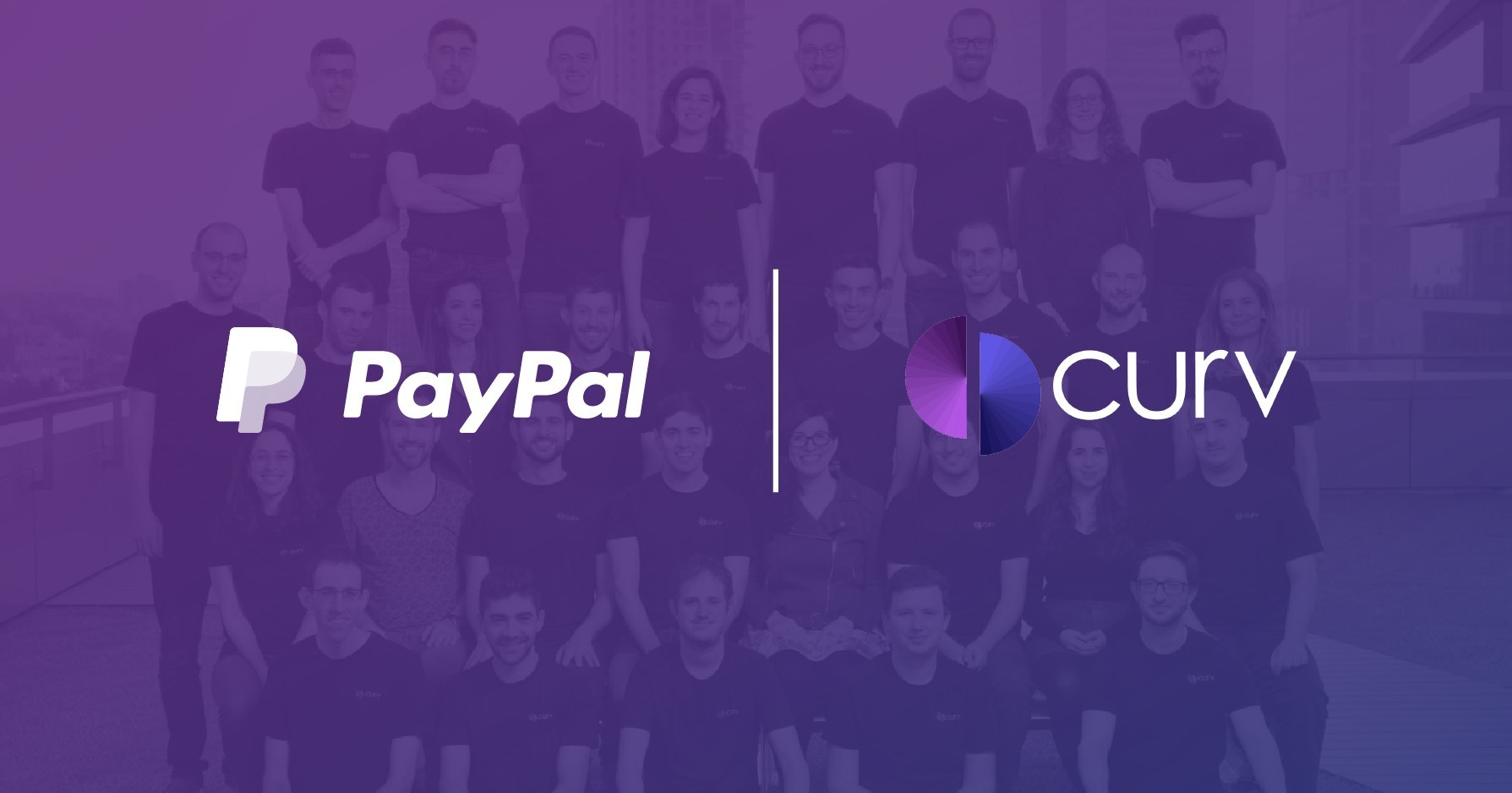
PayPal, now boasting 375 million consumers and $2.4 billion in profit for 2019, said in its statement that “The acquisition of Curv is part of our effort to invest in the talent and technology to realize our vision for a more inclusive financial system.”
Last year, PayPal announced its commitment to help shape the role that digital currencies will play in the future of financial services and commerce.
Blockchain.com Crypto Wallet outage affects ‘large number’ of users
On March 9, Blockchain.com, the world’s oldest crypto company, experienced an issue that prevented its users from accessing their wallets.
Upon investigation, the company reported that a fire at one of their many data centers had caused the outage. The issue was fixed eight hours later with wallet functionality being fully restored.
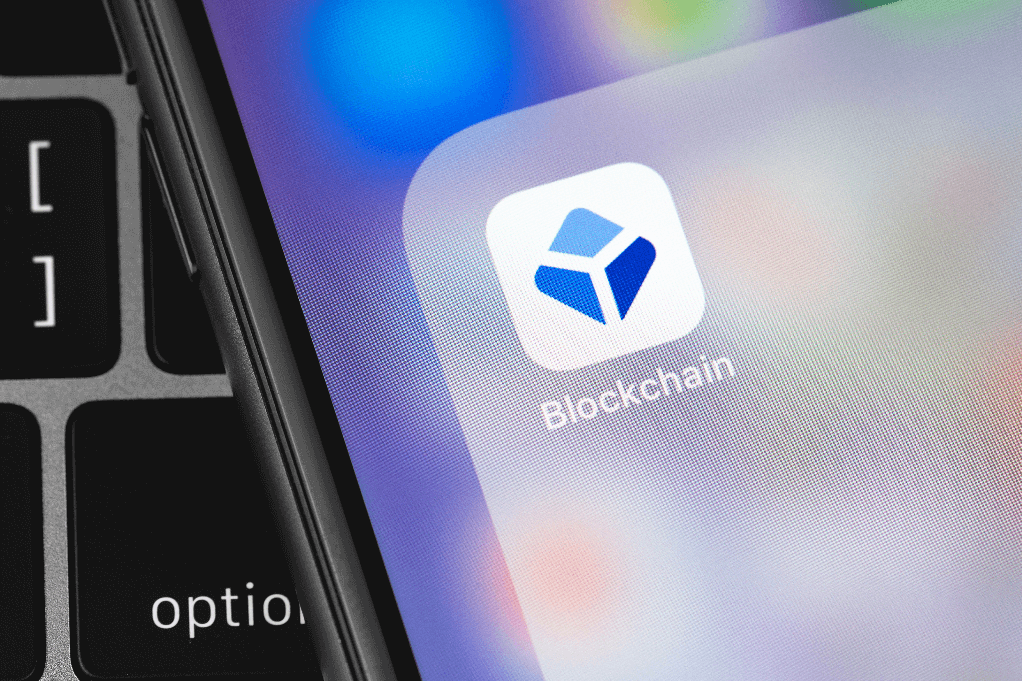
The demand for internet-based services has increased over the past few years. Businesses are now adopting cloud services and advanced technologies for operation, data storage and other related work. Blockchain technology is now a significant driver for data centre demand.
With data centres growing bigger and more powerful, the rate of fire incidents is also increasing. To prevent the type of outages that Blockchain.com experienced last week, data centers operators must adopt fire detection and suppression systems.
As this report mentions, the cost of IT equipment and downtime of the server room is much higher than the cost of the fire suppression system.
Blockchain.com to leverage the business experience and clout of Jim Messina, Obama’s former political and corporate adviser
Blockchain.com was launched in 2011. In the past decade, the company developed a popular cryptocurrency wallet as well as an exchange and an explorer.
According to the latest statistics, people have created 65 million wallets on the company’s website or using mobile apps. Since 2012, 28% of bitcoin transactions have been sent or received by a Blockchain.com-managed wallet. In February 2021, the company raised a $120 million funding round.

Jim Messina
Who is Jim Messina and why does Blockchain.com need his expertise?
Jim Messina is one of the world’s most successful political and corporate advisors.
He is the mastermind behind President Obama’s 2012 re-election campaign. Before crafting the strategy that would get President Obama re-elected, he spent a month learning organizational growth, marketing and emerging technologies from the CEOs of some of the most successful companies in the US: Apple, Facebook, Microsoft, Salesforce etc.
The press release announcing that Jim Messina will be joining the Blockchain.com Board of Directors also mentions the reason behind this decision:
“Jim’s experience and guidance will be invaluable as we navigate the process of bringing crypto to the first billion people.”
Australia’s Government Allocates $5.3M for Blockchain Pilot Projects
The government of Australia has allocated $5.3 million to the Department of Industry, Science, Energy and Resources to study the role blockchain technology can play in regulation.

The money will be spent on two pilot projects intended to show how cost reductions in regulatory compliance are possible with the use of blockchain. The projects will focus on the supply chains of critical minerals and food and beverages.
This news is not surprising with Australia being one of the top leading countries in blockchain technology.
Last year, Australia released its 5-year National Blockchain Roadmap in which it said it was exploring the potential benefits of blockchain to create new economic growth and improve productivity.
The roadmap delves into three main industries which it believes would benefit from applying blockchain: the agricultural sector, the education sector and the financial services sector.
Join the Conversation
We’d love to hear what you have to say.
Get in touch with us on our LinkedIn Page, Facebook Page, Twitter or TikTok.
Blockchain Business News 1-7 March
This is the weekly wrap of blockchain business news for 1-7 March. Subscribe to get the news you need for your business!
RubiX announced full-scale NFT launchpad
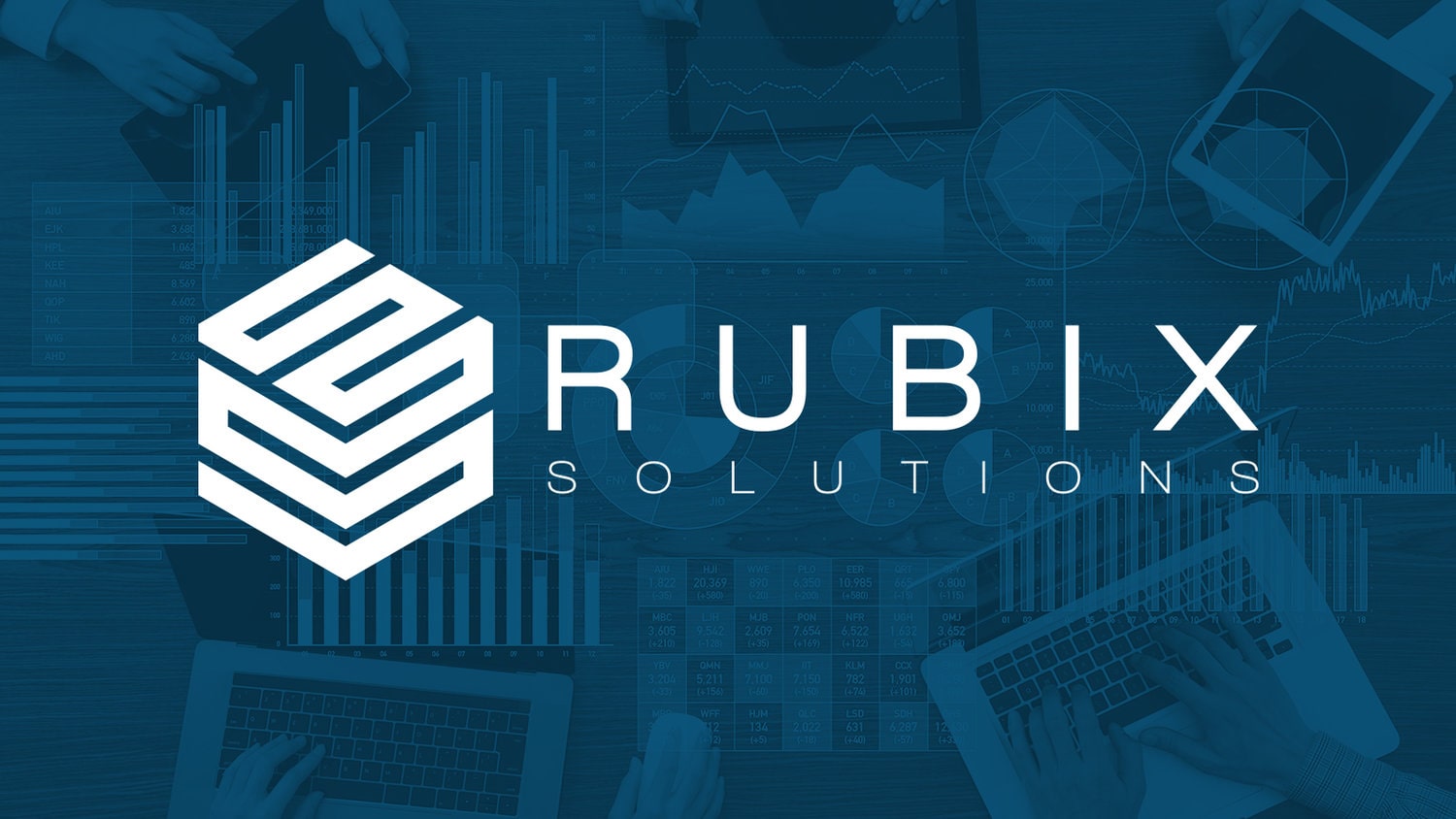
RubiX is a full-scale Blockchain-as-a-Service (BaaS) and security solutions company. The company was established in 2012 and has recently migrated all of its solutions to its own open source blockchain. Read more on the BaaS market.
The BaaS company has announced the launch of its Non-Fungible Tokens (NFT) application. The application is built on the highly-scalable RubiX blockchain backed by proprietary QR Code technology that secures, authenticates and proves ownership of digital and tangible assets.
With its application, RubiX is aiming “to make NFT more accessible to our enterprise partners and general consumers.”
The RubiX blockchain is several times stronger than Bitcoin and Ethereum. Each transaction is completed within ~250ms.
RubiX NFT is a digital asset that can be applied to industries including sports merchandise and memorabilia, luxury goods, real estate and financial institutions like asset management, insurance, payments and fintech.
VTB and Gazprom Neft launched Smart Fuel, a Blockchain-Enabled Payments

VTB or Vneshtorgbank was established in 1990 in Russia to service the country’s foreign economic transactions and promote its integration into the global economy.
Gazprom Neft, a subsidiary of Gazprom, is the third largest oil producer in Russia.
Gazprom Neft’s aviation refueling business is operated by Gazprom Aero. Gazprom Aero has recently launched Smart Fuel, a revolutionary approach to aircraft refueling.
Smart Fuel is a digital payment system which allows airlines to instantly pay for the fuel directly through fully secure financial transactions in real time, 24/7.
The technology has reduced the transaction time from 4-5 days to just a few minutes, while also significantly cutting down on airlines’ costs.
AC Milan raised over $6 million with their $ACM Fan Token

Italian soccer club AC Milan has become the latest sports team to take advantage of the crypto movement.
The team has debuted with their $ACM Fan Token on Binance, the world’s biggest cryptocurrency exchange. In just a few hours, the team had raised more than $6 million in new digital revenue.
The $ACM Fan Token is on the Chiliz blockchain-based fan engagement platform Socios.com. Fan Token holders have access to a range of club benefits, including the right to vote in polls, VIP rewards, exclusive club and sponsor promotions, games, chat and ‘super-fan’ recognition.
Amazon supports Ethereum on its AWS platform

Amazon Web Services has launched an enhanced version of its Amazon Managed Blockchain service that features support for the popular Ethereum blockchain platform.
Amazon Managed Blockchain allows customers to encrypt Ethereum transaction data both at rest and while it’s traversing the network.
The service also includes tools that companies can use to continuously synchronize transaction data from their nodes with the other nodes that make up the public Ethereum main network.
Ethereum is the second blockchain platform that AWS has made available on the service. Amazon Managed Blockchain also supports Hyperledger Fabric, which is maintained by the Linux Foundation and targets the enterprise market.
Blockchain reached space

JP Morgan has successfully tested a blockchain transaction in space using Danish space firm GomSpace’s satellites.
It is the world’s first bank-led tokenised value transfer in space, executed via smart contracts on a blockchain network, established between satellites orbiting the earth.
The transaction was executed between two GOMX-4 satellites in the low Earth orbit (LEO), which validated the approach towards a decentralised network where communication with the earth is not necessary.
Hive Blockchain Sees Crypto Mining Income increase by 174%

Hive Blockchain (HIVE) is a publicly traded cryptocurrency mining firm. The firm benefited from the bull market in digital assets last quarter as bitcoin (BTC) prices rose and closed last year with $13.7 million, a 174% increase from the same period a year earlier.
The Vancouver company has a current market value of $1.57 billion after passing the $1 billion mark in early January. The lion’s share of operations are dedicated to mining Ethereum (ETH).
Crypto mining means gaining cryptocurrencies by solving cryptographic equations through the use of computers. This process involves validating data blocks and adding transaction records to a public record (ledger) known as a blockchain. Bitcoin miners receive Bitcoin as a reward for completing “blocks” of verified transactions which are added to the blockchain.
Marc Cuban is a member of the NBA’s blockchain advisory group

Marc Cuban, source: Inc. Magazine
Following the amazing success with Top Shot Moments, the NBA has established a blockchain advisory group to explore potential uses of the emerging technology.
The group includes billionaire Dallas Mavericks owner Mark Cuban, Washington Wizards owner Ted Leonsis and Brooklyn Nets owner Joseph Tsai and is tasked with determining how to leverage blockchain to benefit the NBA’s business.
JPMorgan posts 61 blockchain jobs

J.P. Morgan is one of the global leaders in financial services. S&P Global ranked JPMorgan Chase as the largest bank in the United States and the 5th largest bank in the world by total assets.
The bank has recently established a business unit solely focused on blockchain development, called Onyx, in October. Liink is J.P. Morgan’s peer-to-peer blockchain-based data network, operating under Onyx.
True to its commitment to digital currency and blockchain, the bank is now aiming to build its blockchain engineering team. The JPMorgan site is now displaying 61 open jobs for blockchain ranging from software engineers to a DevOps Engineering Lead (Vice President).
The majority of the job openings are in India, Singapore, the US and the UK.
Join the Conversation
We’d love to hear what you have to say.
Get in touch with us on our LinkedIn Page, Facebook Page, Twitter or TikTok.
Blockchain Business News 22-28 February
NBA Top Shot Moments, on-court video highlights minted on the blockchain, reached $200M+ in sales
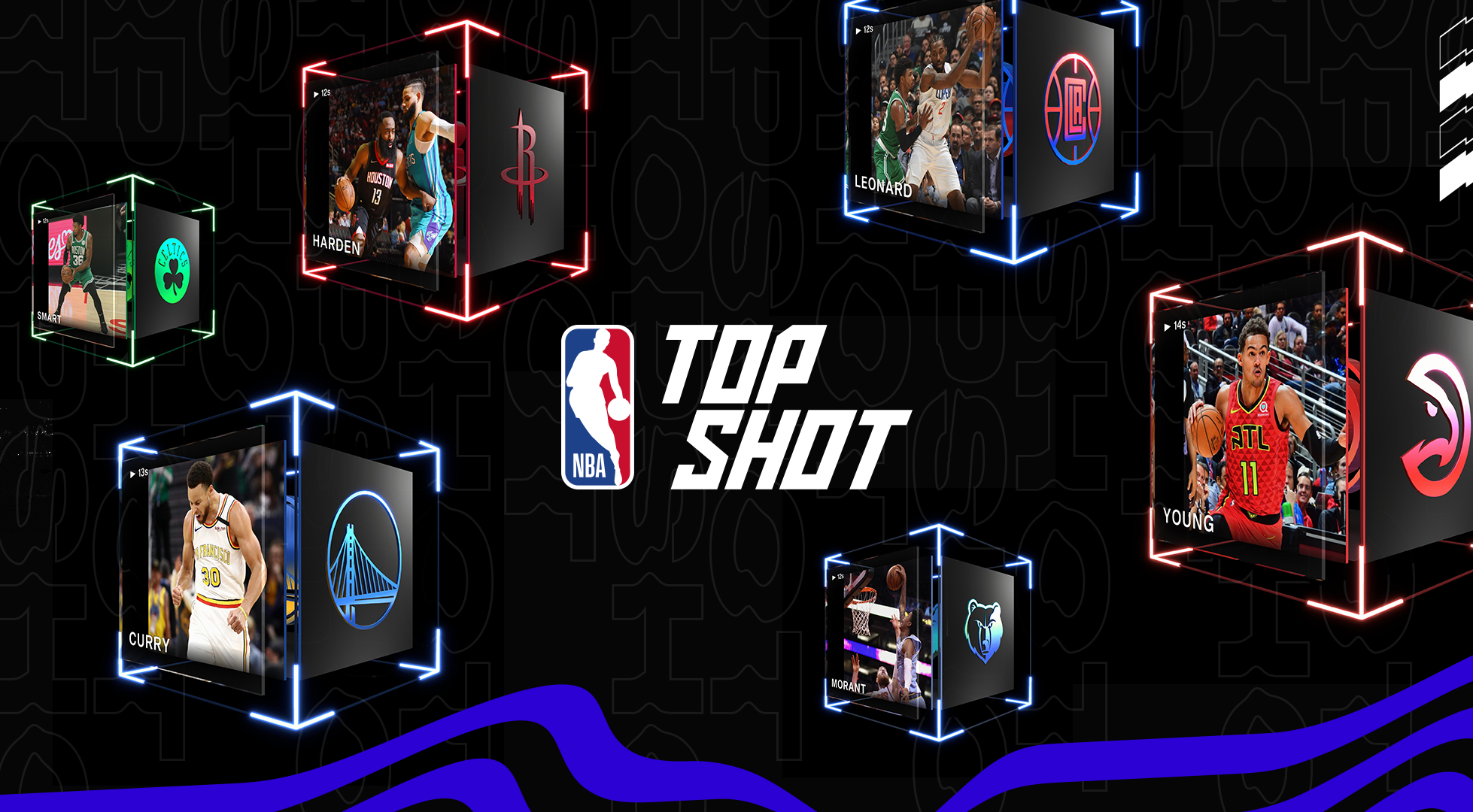
Tired of collecting the same old baseball cards? It’s time to switch to basketball!
NBA provides basketball fans with a new kind of collectables: the Top Shot Moments.
With the Top Shot Moments, fans can collect and own the NBA’s greatest highlights.
Top Shot Moments are video clips of basketball plays with animations.
These clips are licensed by the NBA and minted on the blockchain in limited supply.
Each Moment has a nonfungible token (NFT), which is unique to that specific Moment. The NFT proves the authenticity of the traded Moment, and without the need to send physical memorabilia, the transfer is very quick.
NBA Top Shot Moments is the harbinger of a new era in fandom. In just over a week, sales increased by 100%, jumping to over $200 million.
The NBA Top Shot Moments experience was created by Dapper Labs, a consumer-focused blockchain developer.
Crypto.com to perform the largest token burn in history

source: crypto.com
Crypto.com is a pioneering payment and cryptocurrency platform. Founded in 2016 with the goal of promoting the widespread adoption of cryptocurrencies, Crypto.com already has over 5 million users.
In what the company has called the largest token burn in history, 70 billion CRO will be burned as an important step to fully decentralizing the Chain network.
It will also support the company’s launch of its CRO Chain Mainnet on March 25. The burn will increase the circulating supply of CRO from the current 24% to over 80%.
We’re looking forward to joining all ecosystem partner projects and all contributors in building the world’s best infrastructure for Payments, DeFi and NFTs.
Crypto.com
Automotive Blockchain Market Size Will Grow 30% to $2 billion by 2026
In 2019, the global Automotive Blockchain Market was approximately $300 Million.
The latest study reports that the market is expected to grow at a CAGR of 30% and is anticipated to reach around $2 billion by 2026.
Top market players are Ripple Labs Inc., Ethereum, Bigchaindb, Carblock, Consensys, Shiftmobility, IBM, Context Labs, Cube, Accenture and others.
What is the application of blockchain technology in the automotive market?
Blockchain technology in the automotive sector can be used to store and update information related to vehicle spare parts.
This helps the car manufacturer, service providers, and customers to track the origin of the part avoiding the selection of counterfeited products.
NFTs based on the show American Gods to roll out in the coming days
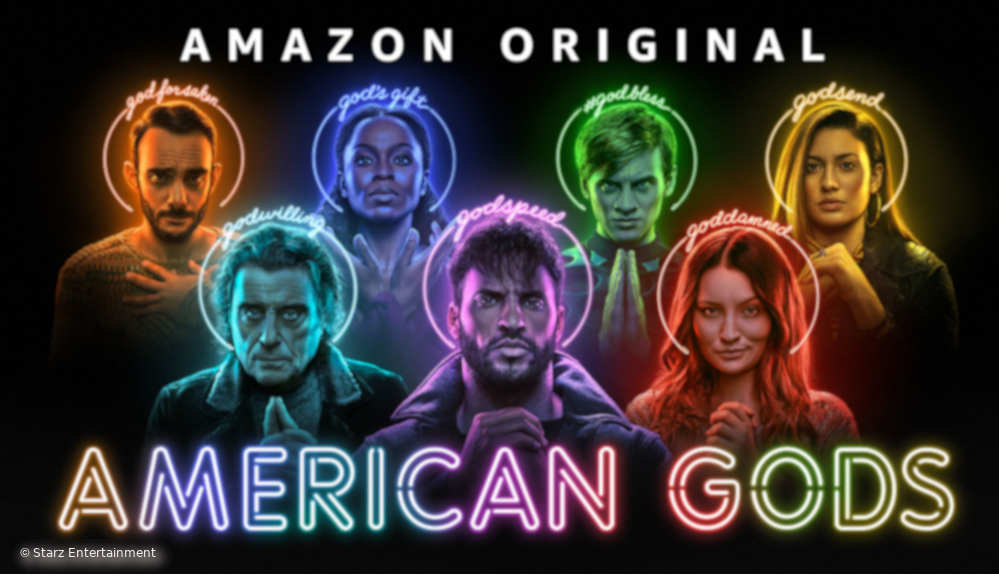
American Gods is a fantasy drama series based on Neil Gaiman’s novel of the same name. The show, now in its third season, is very popular, having won several prestigious TV awards to date.
Last week, Fremantle, the show’s producer, announced that they would roll out American Gods digital collectables, i.e. NFTs, in collaboration with Curio, a platform that allows fans to own, share or trade digital items in a manner akin to physical trading cards or collectables.
A spokesperson for Fremantle said the digital collectables are a new way for the show’s fans to “share and interact in a deeper and more meaningful way with the content and characters they love.”
State Bank Of India Joins Liink, JPMorgan’s Blockchain Network
J.P. Morgan is one of the global leaders in financial services. S&P Global ranked JPMorgan Chase as the largest bank in the United States and the 5th largest bank in the world by total assets.
Recently, J.P. Morgan has been increasing its commitment and interest in digital currency and blockchain. The bank established a business unit solely focused on blockchain development, called Onyx, in October. Liink is J.P. Morgan’s peer-to-peer blockchain-based data network, operating under Onyx.
Using Liink helps lower transaction costs and reduce the time taken to resolve cross-border payments-related inquiries from up to a fortnight to a few hours.
About 100 banks are live on the network now with State Bank of India being the latest to join Liink.
A research report from Bank of America found that 21% of banks they cover have incorporated blockchain technology into their businesses in some form.
Modulus introduces Blockchain-as-a-Service offering
Modulus is a US-based developer of ultra-high-performance trading and surveillance technology that powers global equities, derivatives, and digital asset exchanges.
Last week, the company announced that it released a Blockchain-as-a-Service offering.
What is Blockchain-as-a-Service?
Blockchain as a Service (BaaS) is a type of blockchain service offering that allows business customers to use cloud-based solutions to develop, host and adopt their own blockchain applications, smart contracts and other relevant functions on the blockchain.
The BaaS market is on the rise.
According to the latest reports, the global blockchain-as-a-service market size is set to reach $24.94 billion by 2027, exhibiting an impressive CAGR of 39.5% during the forecast period.
Huawei, Baidu, Oracle, IBM, Alibaba are among the key companies operating in the BaaS market.
Modulus’ BaaS offering is blending a mix of image recognition and other types of bio-inspired AI together with blockchain technology.
“Our solution can verify that a distinct event happened at an exact time, by a specific person in a particular location. It really is next-generation verification in every sense of the concept,” explained Richard Gardner, CEO of Modulus.
Quote of the week

Peter Thiel (thielfoundation.org)
PayPal had these goals of creating a new currency. We failed at that, and we just created a new payment system. I think Bitcoin has succeeded on the level of a new currency, but the payment system is somewhat lacking. It’s very hard to use, and that’s the big challenge on the Bitcoin side.
Peter Thiel, Co-Founder of PayPal (source)
Join the Conversation
We’d love to hear what you have to say.
Get in touch with us on our LinkedIn Page, Facebook Page, Twitter or TikTok.
Blockchain Business News 8-14 February
Stay updated with the latest blockchain news in business: subscribe to our blog notifications!
The blockchain technology market will grow at almost 63% CAGR through 2026 reaching $52.5 billion
According to ResearchAndMarkets’ latest report on blockchain, the blockchain technology market will grow at 63% by 2026 to $52.5 billion.
Important findings for the business environment:
- Distributed ledgers and other blockchain capabilities are rapidly expanding outside finance;
- The preponderance of blockchain revenue will be derived from 3 types of services: Blockchain-as-a-Service (BaaS), Cloud Computing (hosting and data as a service), and Systems Integration;
- Companies like Accenture will lead the charge for systems integration and companies like Amazon, Dell, HPE, and IBM will lead for BaaS and Cloud Computing;
- Integration and operation of Blockchain technology will redefine how various industries operate, dramatically improving efficiencies, and reduce the cost of doing business.

Blockchain fixes the ‘problem of paper’ in the bank guarantee process
In 2019, IBM and three of Australia’s finance heavyweights announced the formation of Lygon, the blockchain-based platform for bank guarantees.
Lygon is touted by the group as reducing the time to issue a bank guarantee from up to one month to one day.
The Lygon platform runs on the IBM public cloud and it leverages the IBM Blockchain Platform, which is built on top of Hyperledger Fabric, an open-source blockchain project from the Linux Foundation.
On February 9, Lygon announced minting the industry’s first standardised digital bank guarantee which solves the problem of paper.
What is the problem of paper?
Lygon CEO Justin Amos explains:
“Paper is slow, this is why we use emails; paper is expensive, and it’s estimated there are over 1 million journeys alone in Australia transporting paper guarantees. {…} Paper often gets lost and can be easily spoilt, subject to fraud, and problematic to amend.” “We shouldn’t underestimate the environmental impact of using paper,” he added.
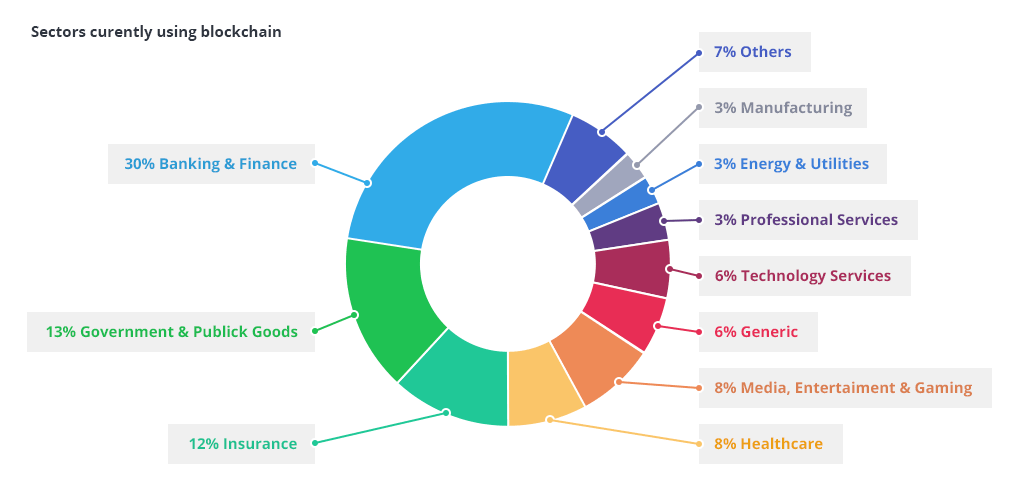
source: dzone.com
BMW backs enterprise blockchain startup Vendia in $15.5m Series A
Vendia is a multi-cloud serverless platform for sharing distributed data in real-time.
The blockchain technology startup has recently announced it had raised a $15.5 million Series A funding round for its serverless SaaS blockchain solution, bringing total funds raised to more than $20 million. One of its investors is BMW i Ventures.
BMW i Ventures is the corporate venture capital arm of BMW and has been actively investing since 2011. With an initial venture capital of 100 million dollars, BMW i Ventures invests in cutting-edge solutions focusing on BMW’s current and future business in the technology and customer & service space.
The team at BMW i Ventures manage investments in technology companies in the US, EU and Israel.
Here are some of the companies the venture capital firm has invested in:
- Verusen is AI-based inventory optimization software;
- Zendrive leverages mobile sensor data to provide actionable insights that improve safety for drivers worldwide;
- Urgent.ly is BMW’s vendor partner for roadside assistance;
- STRIVR platform utilizes immersive VR to help individuals learn faster and more effectively.
Blockchain payments Startup Celo Raises $20M
Celo is a global payments infrastructure that makes financial tools accessible to anyone with a mobile phone.
The platform is a proof-of-stake blockchain built on Ethereum, designed to support stablecoins and tokenized assets while utilizing mobile numbers to secure a user’s public keys.
According to the company’s latest press release, Celo has raised $20 million from renowned investors like a16z (Andreesen Horowitz), whose previous investments include Facebook, Slack, Asana, Lyft and more.
Since its launch in 2017, Celo developed a mainnet, a native token (CELO), a stablecoin (cUSD), a mobile payments app and has been listed on major exchanges including Coinbase and Binance.
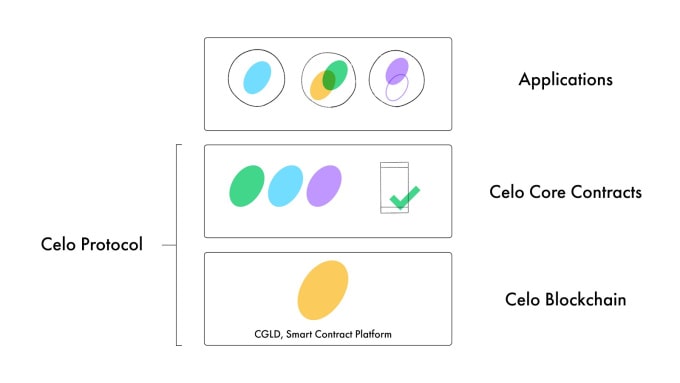
source: techcrunch.com
Blockchain technology to be used against counterfeit products in China
Future FinTech and China Foundation of Consumer Protection have announced they signed a cooperation agreement to use blockchain technology against counterfeit products. The cooperation will expire on January 31, 2026.
Future FinTech is a leading blockchain e-commerce company and a service provider for financial technology. The company’s operations include a blockchain-based online shopping mall platform, Chain Cloud Mall, a cross-border e-commerce platform (NONOGIRL) and an incubator for blockchain-based application projects.
Cloud Chain Mall is the first C2C blockchain shopping mall operated with blockchain anti-counterfeiting tracing technology.
The goal of this agreement is to build the quality and safety credit system for Chinese brands and enterprises and protect the legitimate rights and interests of the enterprises and their brands.
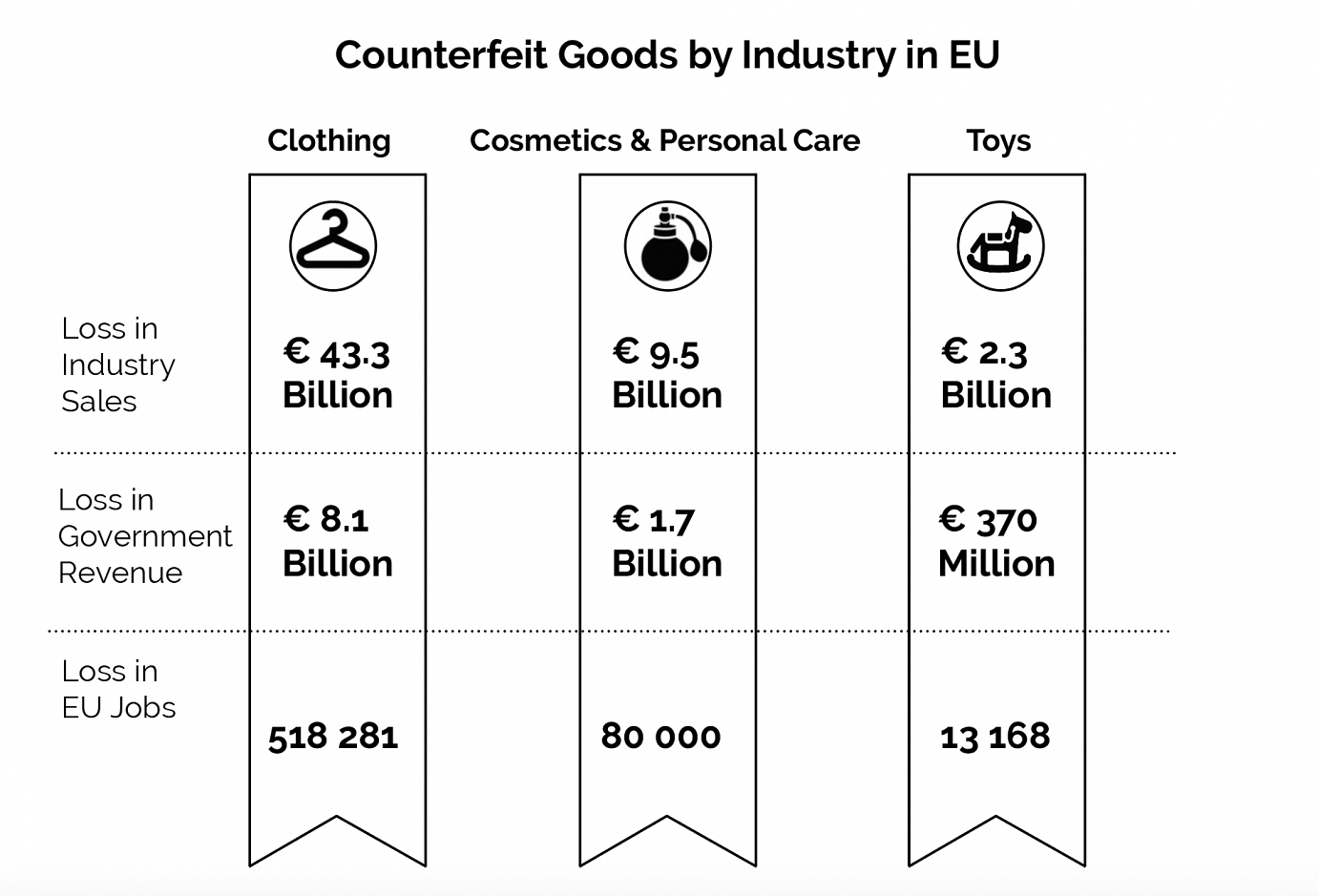
source: Bologna Business School
Quote of the week

Marc Cuban / source: Inc. Magazine
It’s like the early days of the internet’ when a lot of people thought we were crazy
Investor and self-made billionaire Marc Cuban on blockchain
Join the Conversation
We’d love to hear what you have to say.
Get in touch with us on our LinkedIn Page, Facebook Page, Twitter or TikTok.
Video streaming industry expected to grow to $150 billion by 2026
According to the latest research, the video streaming industry is expected to grow to $150 billion by 2026 at CAGR of 18%.
In this article:
- Video streaming industry stats and facts
- Key factors driving the video streaming industry growth
- Key restraining factors for the growth of video streaming industry
- Opportunities
Video streaming industry stats and facts
![]() Due to lockdown, Internet users are spending 32% of their time on streaming devices and platforms (Market);
Due to lockdown, Internet users are spending 32% of their time on streaming devices and platforms (Market);
 54% of Internet users are watching more shows and films on streaming services due to Covid-19 (Market);
54% of Internet users are watching more shows and films on streaming services due to Covid-19 (Market);
 Key players in the video streaming software market: IBM, Vimeo, Brightcove, Qumu, Kaltura, Wowza etc;
Key players in the video streaming software market: IBM, Vimeo, Brightcove, Qumu, Kaltura, Wowza etc;
 Key players in the VoD market: Netflix, Hulu, Disney, HBO, Apple, Google, AT&T, Amazon, YouTube;
Key players in the VoD market: Netflix, Hulu, Disney, HBO, Apple, Google, AT&T, Amazon, YouTube;
 Media and Entertainment, BFSI, Healthcare, and Academia and Education, eCommerce contribute to ~60-70% of the market;
Media and Entertainment, BFSI, Healthcare, and Academia and Education, eCommerce contribute to ~60-70% of the market;
 The fastest-growing video streaming market is China. China’s live-streaming industry has more than doubled in size compared with the previous year, reaching now $5 billion (Researchgate);
The fastest-growing video streaming market is China. China’s live-streaming industry has more than doubled in size compared with the previous year, reaching now $5 billion (Researchgate);
 In India, the video streaming industry is projected to reach $465 million by the end of 2020 (Statista)
In India, the video streaming industry is projected to reach $465 million by the end of 2020 (Statista)
 The largest video streaming market is the US. Here the video streaming industry is projected to reach $24 billion in 2020 (Statista)
The largest video streaming market is the US. Here the video streaming industry is projected to reach $24 billion in 2020 (Statista)
 The fastest-growing segments in the video streaming industry are:
The fastest-growing segments in the video streaming industry are:
- Video Analytics. Video analytics allow service providers to better understand their audiences, serve them better and thus, remain competitive.
- Live streaming. Live streaming helps audiences feel more engaged and more connected with the person in front of the camera.

Key factors driving the video streaming industry growth
 Increasing penetration of mobile devices and internet users
Increasing penetration of mobile devices and internet users
In 2020, the number of global smartphone users is projected to total 3.5 billion, marking a 9.3% increase from 2019. The current global population of 7.7 billion people means the smartphone penetration rate is at 45.4 %. (Oberlo)
Almost 4.66 billion people were active internet users as of October 2020, encompassing 59% of the global population. Mobile has now become the most important channel for internet access worldwide as mobile internet users account for 91% of total internet users. (Statista)
 Growing demand for VoD streaming
Growing demand for VoD streaming
According to Cisco, video will account for 82% of all Internet traffic by 2022.
 Remote work & Lockdown
Remote work & Lockdown
The COVID-19 pandemic has had serious consequences on business too with a large number of employees working remotely.
More than 1/4th of the world’s population went into lockdown. This has resulted in increased demand for online streaming and entertainment services.
Netflix added 26 million new subscribers in the first six months of 2020 which accounts for the company’s biggest growth spurt in history. As of the third quarter of 2020, Netflix had 195.15 million paid subscribers worldwide. (Forbes)
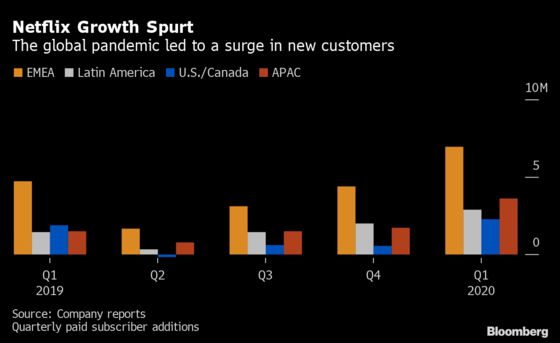
Disney+ launched a year ago with the goal of reaching 60 million to 90 million subscriptions by 2024. The company has recently announced that the platform surpassed 74 million subscribers by the end of 2020, outperforming all expectations. (CNBC)
Apple TV+ also launched a year ago and is included in the company’s One subscription bundle. The company hasn’t released any info regarding the number of its paying subscribers but estimations range from 10 million to 40 million subscribers. (TheVerge)
As of January 2020, there are over 150 million Amazon Prime Video users. (Market)
 Growing adoption of cloud-based solutions
Growing adoption of cloud-based solutions
The global public cloud service market is projected to reach $266 billion in 2020. This spells out a projected growth of 17.3% since 2018. According to Gartner’s forecast, infrastructure-as-a-service (IaaS) solutions, like cloud storage, will be the fastest-growing segment of the market with 24% predicted growth. (Hosting Tribunal)
 Growing demands of Live Video streaming solution
Growing demands of Live Video streaming solution
Over the past few years, going live on Facebook has become a popular feature among its users. Today live video is on almost every social platform: Instagram, Twitter, LinkedIn, Snapchat, YouTube etc.
 Technology innovations like blockchain and AI
Technology innovations like blockchain and AI
Video streaming as a service relies entirely on technology. Video streaming is not possible without video storage, encoding, networking and streaming. Blockchain technology expands storage options by spreading data across the blockchain computer network. Streaming video will be able to tap into underutilized computers through the Blockchain, which will dramatically reduce streaming’s cost (learn more).
From face recognition to chatbots and disease mapping, AI has a wide range of applications across many verticals. In video streaming, AI helps with workflow optimization, content-aware encoding and bandwidth use optimization while maintaining an appropriate level of quality. The main benefit of using AI in video streaming is cost saving.
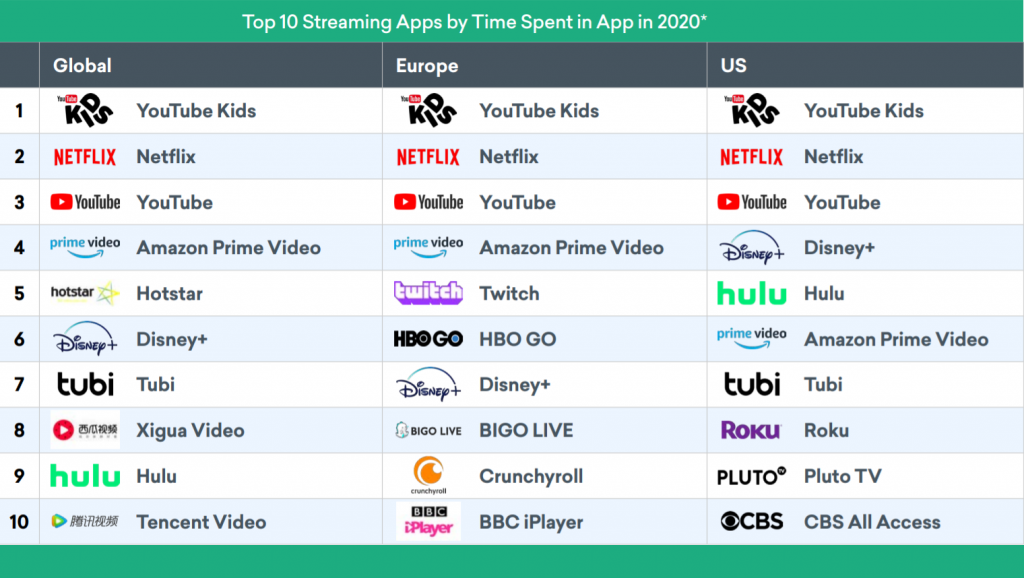
Key restraining factors for the growth of video streaming industry
- connectivity issues;
- latency and bandwidth issues which may result in poor quality video;
- a surge in internet traffic;
- data loss due to buffering;
- the disparity among software systems;
- high content cost;
- easy availability of pirated data;
- loss of personal and financial details.

Opportunities
Over the past few years, digital transformation has been in the top three goals for businesses everywhere.
The pandemic-induced lockdown forced businesses that had already started down this path to speed up and businesses that had a traditional high-street or in-person revenue generation model to pivot toward online and digital.
As a result, this year has seen teachers teach classes online to students ranging from first-graders to executive MBA participants.
Doctors see their patients through their PC’s camera first and popular talk show hosts broadcast from their homes.
Live music and business events have gone online, each of them looking to provide attendees with the best experience possible.
International banks with thousands of branches worldwide are making the most of the digital environment allowing their clients to keep safe.

Conclusion
Video streaming industry is projected to grow to $150 billion by 2026.
The industry has been growing steadily in recent years but the pandemic has accelerated its growth.
Remains to be seen if the industry will maintain its growth rate after the pandemic is over.
Join the Conversation
We’d love to hear what you have to say.
Get in touch with us on our LinkedIn Page, Facebook Page, Twitter or TikTok.
Save the Date: 4 Blockchain Events for Entrepreneurs in 2019
When talking about the future of business, Blockchain is on every entrepreneur’s mind.
You may know Blockchain is valuable, but understanding how Blockchain works and how your business can benefit from it, can be a challenge.
Business events focused on Blockchain are opportunities for entrepreneurs to receive valuable information, to connect and network with professionals and be inspired to take their business to the next level.
Here are 4 Blockchain events that entrepreneurs can attend in 2019:
BLOCKCHAIN EXPO
- Date: April 25-26, 2019
- Location: London, UK
- Info: https://blockchain-expo.com/global/

image source: blockchain-expo.com
Blockchain Expo is a blockchain focused conference and exhibition event dedicated to blockchain experts, enthusiasts and entrepreneurs.
The conference is dedicated to delivering top-level keynotes, interactive panel discussions, solution-based case studies and free workshops.
The conference aims at exploring the industries that are set to be disrupted the most by this new technology: manufacturing, retail, financial services, legal, healthcare, insurance, energy, music, government and real estate.
The speaker lineup features executives from major companies like Coca-Cola, IBM, Allianz, Deutsche Bank, Kodak etc.
FUTURE BLOCKCHAIN SUMMIT
- Date: April 3-4, 2019
- Location: Dubai, United Arab Emirates
- Info: https://www.futureblockchainsummit.com/

image source: twitter.com/futblocksum
Future Blockchain Summit is the gateway to the world’s most advanced blockchain government and a meeting ground for industry leaders and tech start-ups.
During two days more than 1500 people will hear from over 60 speakers specialising in all areas of the blockchain ecosystem. Throughout the two days blockchain enthusiasts can connect with the blockchain leaders of the Dubai government and cutting edge global and startup tech leaders.
The summit’s topics range from smart cities, energy and finance to real estate, healthcare and education.
The event is rich in content and very dynamic for attendees: panel discussions, case studies presentations, networking opportunities, exhibitions and showcases.
THE BLOCKCHAIN EVENT
- Date: January 31-February 1, 2019
- Location: Fort Lauderdale, USA
- Info: https://www.theblockchainevent.com/east/

image source: theblockchainevent.com
The Blockchain Event is dedicated to all entrepreneurs, developers and investors interested to learn everything about blockchain business models.
This event’s attendees will learn how ICOs and cryptocurrencies can be leveraged to gain customers, add value to company offerings and differentiate products and services.
Industry experts and founders of cutting-edge global startups will discuss CBOE attention, potential regulation, security concerns and what the future holds for blockchain.
CRYPTO EXPO ASIA
- Date: April 27, 2019
- Location: Manila, Philippines
- Info: https://philippines.cryptoexpo.asia/

image source: philippines.cryptoexpo.asia
The Crypto Expo Asia is not just about building network between crypto companies and gurus from all over the world but more so about getting to know what crypto world is actually about. Many up-to-date and vital questions of the crypto-world will be covered in the speaker hall and workshop rooms.
Here are a few topics that will be discussed: Blockchain business, Blockchain digital identification, ICO and White Paper projects, Crypto-exchange, cryptocurrency and crypto-trading, cryptocurrency futures, mining as actual business etc
This event is dedicated to brokers and investment companies, private investors, insurance, financial and HR organizations, traders, media, software developers, payment systems, law firms.
How Blockchain can Change Marketing and Advertising
Blockchain technology is an open-source distributed database using state-of-the-art cryptography.
Essentially, blockchains are about a rapid transfer of value.
What does this mean?
It means that we no longer need the services of a bank to authenticate who we are, to do transactions, to exchange money, etc. Banking as we know it would be eliminated from this ecosystem.
What about other industries or domains?
How can blockchain technology influence the way brands do marketing or advertising?
Blockchain – marketing data and advertising
First let’s take a look at the marketing and advertising challenges that brands and customers have faced in recent years:
- brands are collecting more data than ever before but they question the reliability, accuracy and transparency of this data
- brands are not able to ascertain how their advertising budget has been spent
- ad fraud has been rising globally
- although brands have a lot of data on their customers, they know too little about their preferences
- consequently, customers are overwhelmed with too many messages, ads, emails, etc
- these messages are not relevant and too frequent
- customers don’t trust their brands with their personal data
- Google and Facebook have attracted increasing ad revenues as middlemen for advertisers and website owners; Google’s advertising revenue grew nearly 25% in 2017 to $95,4 billion and Facebook’s ad revenue grew 49% to $39.9 billion
This is how blockchain can address brands’ and customers’ challenges:
- with blockchain technology, marketers can monitor where their ads are being placed
- marketers can control how their assets are delivered
- blockchain technology will ensure that real followers and consumers are engaging with brands’ ads
- ad fraud will be reduced
- ad engagement tracking can be more accurate which entails more precise digital attribution
- blockchain technology can solve the problem of ad frequency
- studies have shown that consumers are more willing to share their personal data to receive relevant offers
- blockchain’s transparent operations will help brands using this technology to build trust with their consumers
- transparency will allow customers to check if their favorite brand is true to its story or live up to its claims by looking at the brand’s supply chain and find out how the product was made
- through blockchain, advertising middlemen such as Google and Facebook will be eliminated
Here are 3 examples of how brands are already using blockchain technology:
MIT
As part of a pilot program, The Massachusetts Institute of Technology (MIT) has issued blockchain-based digital certificates to more than 100 graduates.
In October 2017, MIT partnered with Learning Machine, a software development company which created Blockcerts Wallet, an app that enables students to get a verifiable, tamper-proof version of their diploma that they can share with employers, schools, family, and friends.
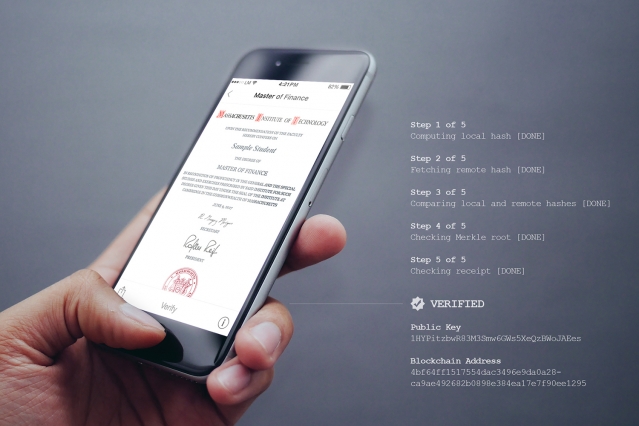 image source: news.mit.edu
image source: news.mit.edu
The pilot program aligns with MIT’s goals of empowering the students to be “the curators of their own credentials”, says Mary Callahan, Registrar and Senior Associate Dean.
Babyghost
Babyghost is a Chinese fashion brand that fits its fashion items (bags, cardigans, dresses, etc) with a chip. The byer then scans the item with his/her smartphone and access all the information and history of that item.

image source: fintechnews.sg
This technology offers an unparalleled interaction with the brand and the brand offers its buyers transparency. The app is called VeChain and is a product management solution on the blockchain.
The blockchain system gives a unique ID to every product that allows multiple parties to follow a specific product through the supply chain and post-sale.
With VeChain, Babyghost can create a great connection between their clients, technology and fashion. To celebrate brand landmarks, Babyghost can invite customers to scan their new bag and find that they had won a trip to an upcoming conference or free clothing. Possibilities are endless!
Walmart
Beginning with April this year, Walmart has been using blockchain technology to track package contents, environmental conditions, location, and other details.
Walmart official said that Blockchain was able to shorten the time it took to track produce from six days to two seconds.
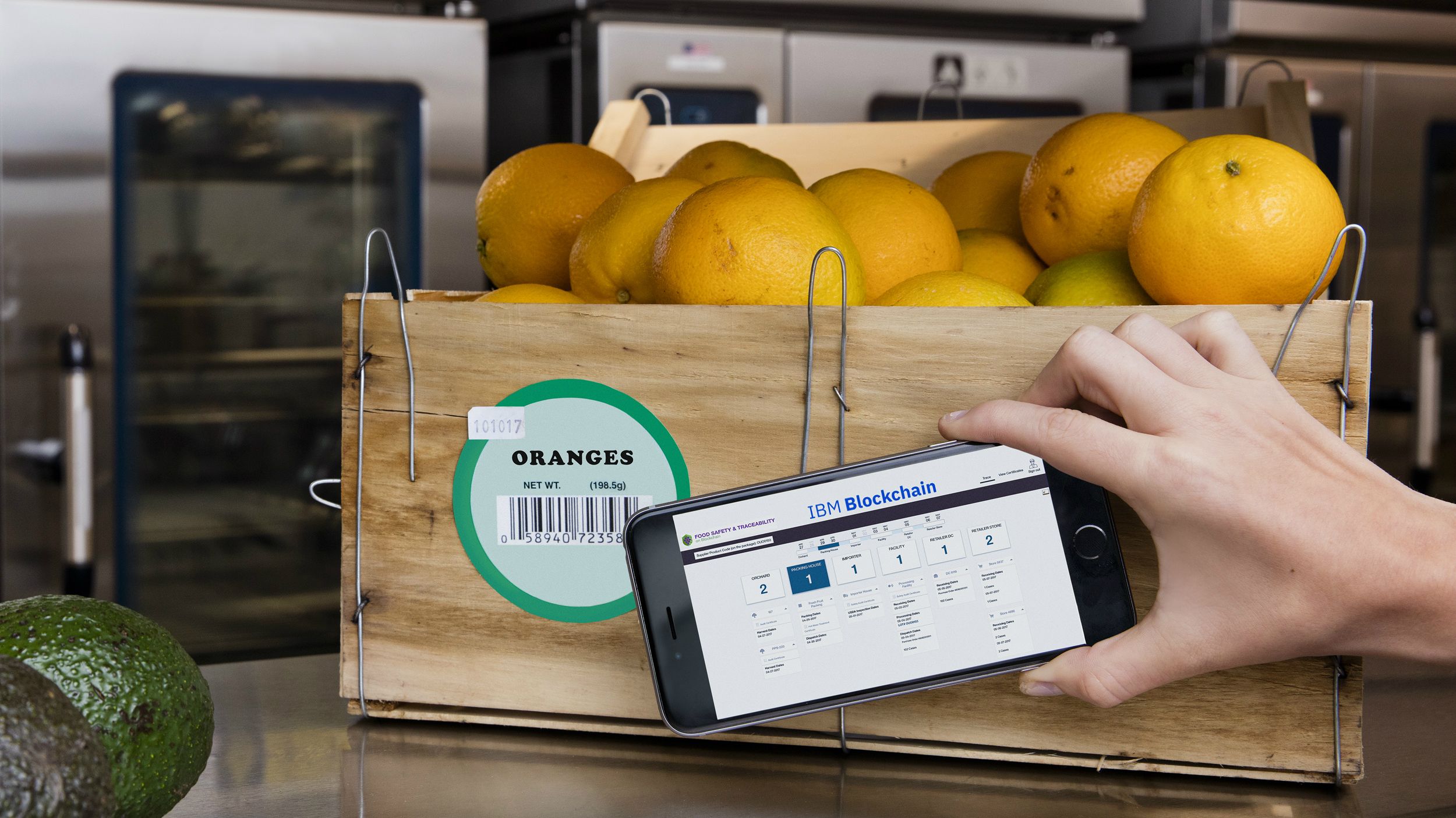
image source: qz.com
Thanks to the technology’s decentralised nature, Walmart’s blockchain-based system is protected from hacking attacks and data alterations.
Did you like our article?
Subscribe to our newsletter to receive our content.
Blockchain and cryptocurrency: what’s the difference?
What is blockchain?
Blockchain is a digital ledger in which transactions made in Bitcoin or another cryptocurrency are recorded chronologically and publicly. It allows digital information to be distributed but not copied.
Many have compared the blockchain with a spreadsheet: the spreadsheet is duplicated thousands of times across a network of computers and this network is designed to regularly update this spreadsheet. The blockchain is transparent and cannot be corrupted, it isn’t controlled by any single entity and it is not flawed.
What is cryptocurrency?
The cryptocurrency is a digital currency in which encryption techniques are used to regulate the generation of units of currency and verify the transfer of funds, operating independently of a central bank.
Bitcoin is the first cryptocurrency or “digital gold”. But unlike USD or EURO, cryptocurrencies are not issued by a bank or owned by a country, don’t fall under the influence of political regimes and are private and anonymous enough to be used as means of payment worldwide. Bitcoins can be traded for goods or services with vendors who accept Bitcoins as payment.
A Short History of Blockchain and Cryptocurrency
Blockchain is a technology invented and developed by a person or a group of persons known as Satoshi Nakamoto.
In October 2008, Nakamoto published “Bitcoin: A Peer-to-Peer Electronic Cash System”, the first paper describing the bitcoin digital currency.
In January 2009, Nakamoto released the first Bitcoin software that launched the network and the first units of the Bitcoin cryptocurrency, called Bitcoins. Nakamoto created a website with the domain name bitcoin.org and continued to collaborate with other developers on the Bitcoin software until mid-2010. Around this time, he handed over control of the source code repository and network alert key to Gavin Andresen, transferred several related domains to various prominent members of the Bitcoin community, and stopped his involvement in the project. Until shortly before his absence and handover, Nakamoto made all modifications to the source code himself.
How does blockchain and cryptocurrency work?
The blockchain is a digital technology that allows value exchange without the need for trust or for a central authority. It is a secure, quick and cheap technology. As mentioned in its definition, blockchain uses a ledger, which is a digital file that keeps track of all Bitcoin transactions.
The ledger file is not stored in a central entity servers, like a bank, or in a single data center. It is distributed across the world via a network of private computers that are both storing data and executing computations. Each of these computers represents a “node” of the blockchain network and has a copy of the ledger file.
In order to be able to perform transactions on the blockchain, you need a wallet, a program that allows you to store and exchange your Bitcoins. Since only you should be able to spend your Bitcoins, each wallet is protected by a special cryptographic method that uses a unique pair of different but connected keys: a private and a public key.
Once you have installed a Bitcoin wallet on your computer or mobile phone, it will generate your first Bitcoin address and you can create more whenever you need one. You can disclose your addresses to your friends so that they can pay you or vice versa. In fact, this is pretty similar to how email works, except that Bitcoin addresses should only be used once.
Here is a short explaining video:
Biggest digital trends in 2018
For the last five years, the agency Ogilvy creates an annual report which aims to spot the key trends in digital and social media marketing that are likely to be important in the coming year. The report contains the agency’s predictions from the previous year and every trend includes actual, actionable recommendations for brands. In 2018, for its fifth report, Ogilvy included also a section that reflects on five years of trends, and looks at the big stories the agency’s representatives have seen play out since they started writing the report.
The report can be seen here and it features five big trends to watch for in 2018: Augmented Reality, The End of Typing, The Tragedy of the Commons in Influencer Marketing,The Amazon Awakening and Seriously Serious.
In our turn, we’ve talked with two specialists on the Romanian digital industry and we found out their predictions and thoughts.

Flavian Cristea, Digital Strategist Grapefruit:
– What do you believe will be the biggest digital trends of 2018?
The biggest digital benefits for customers will come from conversational interfaces and specialized artificial intelligence. These technologies enable customers to use natural language to interact with companies and their assets. We will be seeing more and more cases of making a bank deposit by messaging a chatbot or ordering products from the internet by using digital assistants such as Google Home or Alexa.
We are seeing specialized artificial intelligence and mixed reality as being the main drivers of digital change inside companies. These technologies are used to strengthen the capabilities of the employees, getting more out of the same individuals. It’s a complementary relationship, where the technological aspects fill in for the weaknesses of the humans and the other way around. Blockchain is also a technology that migrated from cryptocurrency to other businesses such as banking and trading, opening new ways of communicating, controlling and tracking information.
– What are they influenced by and why?
The user wants the barrier between the digital and reality to disappear. This desire appears out of the wish of the individuals to interact in a more natural way with everything they use. It’s easier to ask “How much money do I have in my account?” than to go inside a banking application and check your account. It’s also more natural to interact with objects with your hands than with your mouse.
Another obvious influencer is the progress we have achieved in the fields of artificial intelligence and virtual reality. The fact that these technologies are also researched and developed in an open way is a great contribution because everybody can experiment and share what they learned in the process.
– What is Grapefruit advising its clients this year?
We advise our customers to find contexts inside their company to experiment with each technology mentioned above. It does not have to be a big project. Just big enough that, if successful, it can become a pilot project for a bigger digital change.

Andrei Balan, Head of Strategy MRM McCann
– What do you believe will be the biggest digital trends of 2018?
Two things I’d look for in the following year are the access and sharing economy spreading to different aspects of our lives and micro targeted content.
– What are they influenced by and why?
Let’s start with the access and sharing economy. The basic idea here is the digital environment contributes to a steep increase in the number and intensity of desires. The overall digital connectedness lets us know about products and services virtually instantaneously. It also provides us with unprecedented insight into other people’s curated live, so we get to know what everyone has and does. These are both vectors for wanting more things more intensely. Moreover, things like retargeting contribute to turning these desires into quasi-obsessions. But what happens when the number and intensity of desires increases much faster than the financial means to support them? It builds up to phenomena such as the access economy, the sharing economy and then the democratization of all sorts of things and services. For example, why own music when you can just rent and listen to it? Also, people now get to travel to more distant places because Airbnb allows them to cut accommodation costs and invest more in transport. This is a simple example of touristic democratization enabled by the sharing economy.
Now let’s talk about micro targeted content. As it is becoming clearer content is winning the battle with online advertising, we’re starting to look more into what, how and why it works. Using real people, famous or not, to provide credibility to content is already something everybody does. The next base is micro targeting, or micro community-tailored content. This means building certain variations into a marketing campaign that make it more relevant for each segment of the public. And then using media targeting to reach each community with the proper variation.
– What is MRM advising its clients this year?
Our advice? Have no fear in riding the trends. I know countless people who regret not investing early in cryptocurrencies. I myself am one of them. The same thing goes with all trends: ride them early enough to be among the ones who profit most.











